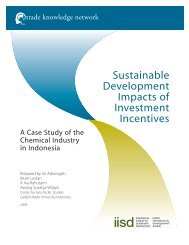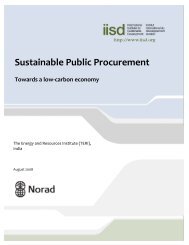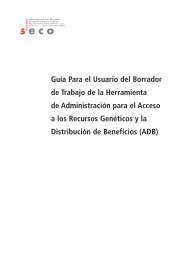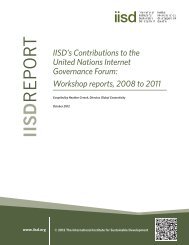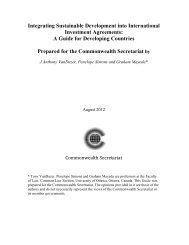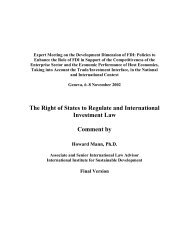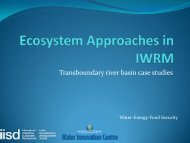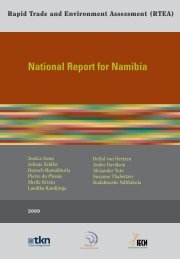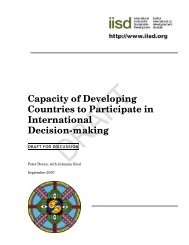Earthenterprise Tool Kit - International Institute for Sustainable ...
Earthenterprise Tool Kit - International Institute for Sustainable ...
Earthenterprise Tool Kit - International Institute for Sustainable ...
You also want an ePaper? Increase the reach of your titles
YUMPU automatically turns print PDFs into web optimized ePapers that Google loves.
EarthEnterprise <strong>Tool</strong> <strong>Kit</strong><br />
TOOL<br />
• Environmental responsibility is internalized into methods that replace<br />
waste- and pollution-generating pro c e s s e s . This reduces demand <strong>for</strong><br />
traditional environmental products and services, but opens new markets in<br />
pollution-prevention technologies and processes.<br />
The United States, Canada, Western Europe, and Japan are the furthest along<br />
on this evolutionary path and have the largest markets <strong>for</strong> both pollution<br />
control and pollution prevention technologies. Many countries in Asia, Latin<br />
America, and Central and Eastern Europe are just starting to tackle pollution<br />
problems and as a result will have the fastest growing markets <strong>for</strong> remediation<br />
and control technologies. If the appropriate regulatory, economic, and fiscal<br />
incentives are put into place, and sufficient investment capital is available,<br />
companies and industries within these regions may be able to accelerate the<br />
adoption of prevention strategies.<br />
Neatly measuring the transition from pollution control to pollution prevention<br />
is often difficult. Remediation and abatement technologies are easy to classify<br />
within the environmental industry. New products, manufacturing technologies,<br />
and process designs, however, tend to be categorized within their relevant<br />
industry, and not as “environmental”. Compact fluorescent lamps and CFCfree,<br />
energy efficient refrigerators, <strong>for</strong> example, are classified as lighting and<br />
appliances, while flue gas desulphurization units (or scrubbers) are termed<br />
“environmental technologies”.<br />
Unless environmental technologies are redefined, slower acting countries may<br />
be perceived as having the largest environmental markets. In countries where<br />
environmentally superior goods and technologies are sought in all sectors, the<br />
numbers may erroneously appear less impressive.<br />
Monitor and Participate in Voluntary Programs<br />
As part of its ongoing ef<strong>for</strong>t to reduce air pollution and the emission of<br />
greenhouse gases, the U.S. Environmental Protection Agency has launched a<br />
series of voluntary programs with industry. The actions “are good ideas on<br />
economic grounds alone,” says the agency. “Energy efficiency is indeed ‘no<br />
regrets’.” Participating companies will keep abreast of the latest technology<br />
developments, be able to monitor the activities of competitors, and avoid being<br />
left behind in this rapidly changing field.<br />
The first voluntary initiative, the Green Lights program, began in January 1991.<br />
By fall 1993, the owners of more than one billion square feet of commercial,<br />
industrial, and institutional space were improving the efficiency of their lighting<br />
systems. More than 1,000 upgrades are under way, with three billion square feet<br />
of space committed, far exceeding the combined total office space in the<br />
AVALANCHE MARKETS<br />
37




